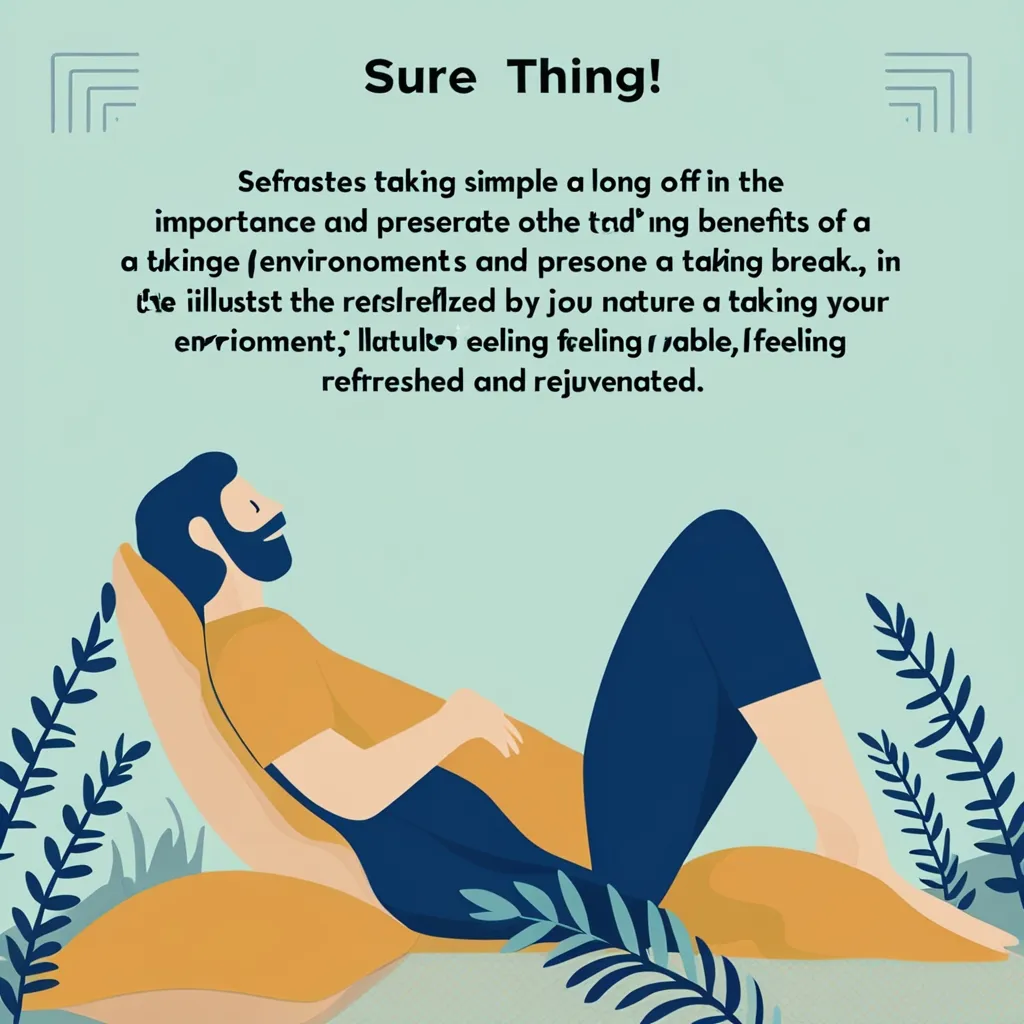Crafting Your Perfect Productivity System: A Guide to Achieving More
We all want to be more productive, right? But let’s face it, productivity isn’t just about downloading the latest fancy app or following some guru’s rigid system. It’s about creating a framework that actually works for you - one that helps you crush your goals without burning out. So, let’s dive into how you can build a productivity system that fits you like a glove.
First things first, you need to know what you’re aiming for. Take a moment to imagine where you want to be in a year, five years, or even a decade from now. Maybe you’re dreaming of buying a house, starting a business, or finally writing that novel. Whatever it is, get clear on those big-picture goals. They’re like your North Star, guiding everything else you do.
Once you’ve got your big goals sorted, it’s time to break them down into smaller, bite-sized pieces. If you’re saving for a house, that might mean creating a budget, finding ways to boost your income, and cutting back on those impulsive Amazon purchases (we’ve all been there).
Now, here’s where things get real. You need to figure out what’s holding you back. Are you a chronic procrastinator? Do you spend hours scrolling through social media when you should be working? Maybe you’re drowning in emails. Whatever your productivity kryptonite is, identifying it is the first step to overcoming it.
With your goals clear and your weaknesses identified, it’s time to make a plan. This is where you get to play strategist. Break down your tasks into simple, actionable steps. Prioritize them based on how urgent and important they are. A simple trick is to use a 2x2 grid, plotting tasks against their cost and value. This helps you quickly see what needs your attention first.
But having a plan is useless if you can’t remember what you need to do. That’s where task capture comes in. Find a method that works for you to jot down tasks as they pop into your head. Maybe it’s a good old-fashioned notebook, or perhaps you prefer a sleek app on your phone. The key is to get those tasks out of your head and into a system you trust.
Now, let’s talk about focus. In today’s world, distractions are everywhere. Your productivity system needs to include strategies for managing these distractions. Maybe that means turning off notifications, finding a quiet workspace, or investing in some noise-cancelling headphones. Whatever it takes to create an environment where you can do your best work.
But it’s not just about managing distractions - it’s also about managing your energy. We all have times of the day when we’re more alert and focused. Figure out when those times are for you and schedule your most important tasks then. If you’re a morning person, tackle the tough stuff early. Night owl? Save those critical tasks for later in the day.
Remember, your productivity system isn’t set in stone. It’s more like clay that you can mold and shape as you go. Be prepared to tweak and adjust as you figure out what works best for you. Maybe you’ll find that your task list is too overwhelming and needs simplifying. Or perhaps you need to build in more breaks to avoid burnout.
Speaking of which, don’t forget to factor in your mental and physical health. A truly effective productivity system isn’t just about getting more done - it’s about living a balanced, fulfilling life. Make sure you’re incorporating activities that promote well-being, like exercise, meditation, or spending time with loved ones.
Technology can be a great ally in your productivity journey, but use it wisely. There are tons of apps out there that can help you manage your time and tasks. But be careful not to get so caught up in the tools that you forget about actually doing the work. And remember to set boundaries - technology should help you focus, not distract you.
One of the most important things to remember is to keep it simple. Your productivity system doesn’t need to be complex to be effective. In fact, the simpler it is, the more likely you are to stick with it. Don’t try to overhaul your entire life overnight. Start small, with one or two changes, and build from there.
Self-regulation is key to maintaining a productive system. Take some time each week to evaluate how things are going. Are you getting the important stuff done? How’s your stress level? Give yourself honest feedback and be willing to make changes if something isn’t working.
Building a productivity system isn’t a one-time task - it’s an ongoing process. Your system needs to be flexible enough to adapt as your life changes. Maybe you’ll switch careers, move to a new city, or start a family. Be ready to reassess your goals and adjust your system accordingly.
Remember, the ultimate goal of a productivity system isn’t just to do more - it’s to live a life that feels meaningful and fulfilling to you. It’s about achieving your goals without sacrificing your well-being in the process.
So, take some time to think about what truly matters to you. What are the big dreams you want to achieve? What kind of life do you want to live? Let those answers guide you as you build your productivity system.
Start by setting clear, challenging goals that align with your long-term vision. Break those big goals down into smaller, manageable tasks. Be honest with yourself about what’s holding you back and find strategies to overcome those obstacles.
Create a plan that prioritizes your tasks and helps you focus on what really matters. Find a reliable method for capturing and organizing your tasks so nothing falls through the cracks.
Develop strategies for managing distractions and maintaining focus. This might involve creating a workspace that supports your productivity or using techniques like task batching to maximize your efficiency.
Pay attention to your energy levels and schedule your tasks accordingly. Don’t forget to build in time for rest and rejuvenation - your productivity system should support your overall well-being, not just your ability to get things done.
Be willing to experiment and adjust your system as you go along. What works for someone else might not work for you, and what works for you today might not work for you a year from now. Stay flexible and open to change.
Keep things simple. The best productivity system is one that you’ll actually use, so don’t overcomplicate things. Start with the basics and add complexity only if it truly adds value.
Use technology to support your productivity, but don’t let it become a distraction. Choose tools that genuinely help you stay organized and focused, and be mindful of how you’re using them.
Regular self-reflection is crucial. Take time each week to evaluate how your system is working and make adjustments as needed. Be honest with yourself about what’s working and what isn’t.
Remember that your productivity system should evolve as you do. As your goals and circumstances change, be ready to reassess and adjust your approach.
Finally, always keep in mind that the ultimate goal of productivity isn’t just to do more - it’s to live a life that feels meaningful and fulfilling to you. Your productivity system should help you achieve your goals while also supporting your overall well-being.
Building a productivity system that works for you is a journey, not a destination. It takes time, patience, and a willingness to learn and adapt. But with persistence and self-awareness, you can create a system that not only helps you get more done, but also helps you live a more balanced, satisfying life.
So go ahead, start crafting your perfect productivity system. Remember, there’s no one-size-fits-all solution. What matters is finding what works for you. Be patient with yourself, celebrate your progress, and don’t be afraid to make changes along the way. With the right system in place, you’ll be amazed at what you can achieve.






